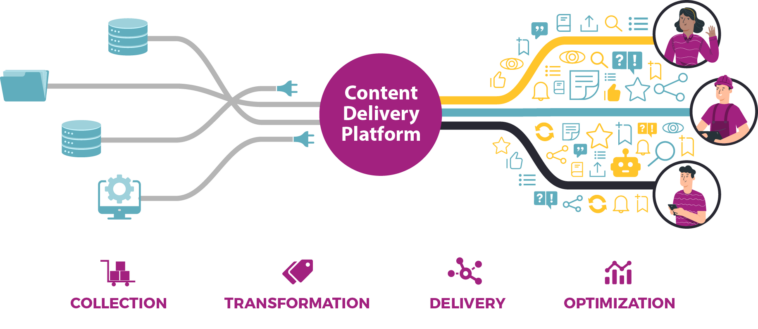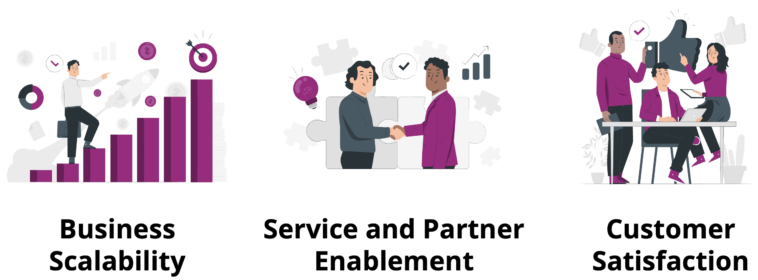At last!
Lavacon 2022 was the first in-person event I attended since the pandemic began and I had very high expectations when I joined the crew in New Orleans on October 23 for four days of conferences and workshops on content best practices and state-of-the-art technologies.
The 20th edition was up to the conference’s reputation and, with more than sixty sessions, lots of valuable insights and content were shared. While it’s difficult to give a complete overview of the many takeaways, I’ll focus on three sessions that caught my attention as extremely relevant and thought-provoking.
Content Silos and the Advent of Content-as-a-Service
There is a growing feeling among content professionals that we won’t be able to bring all silos down and create content from a single tool “that rules them all”.
Few admit and analyze it as clearly as Sarah O’Keefe, CEO of Scriptorium, did during her smashing presentation “From Silo Busting to CaaStle Building”. And although it sounds tough, it’s not such bad news after all.
Firstly, it doesn’t mean that all silos should remain. In fact, having 2-3 CMS or CCMS within a company can probably be cut down to a simpler, leaner equation. Practically, Sarah recommends doing some cleaning and reducing the number of tools to a minimum; to those that a company and the different teams strictly need for creating different content types.
Secondly, Sarah explains that we shouldn’t attempt to unify content at the authoring level, across all tools and stakeholders. Instead, the need for unified content should be fulfilled at the point of delivery. Enters Content-as-a-Service (CaaS).
The principle of CaaS is to connect different content creation systems or repositories, extract content, and serve it on demand to the different endpoints – corporate website, documentation portal, developer communities,…- and users. Sarah’s definition is clear and simple: “CaaS means that you make your content available via an API and defer formatting and combining until the point of delivery. […] So your rendering, your filtering, your variants,… all this happens after the content is requested by the end web page”.
What is the underlying technology to this content silos revolution? Are there examples of successful unified content at the endpoint? Sarah didn’t extend her talk to that part but, as the leading Content Delivery Platform, Fluid Topics can easily take care of this. If you’re interested in the technology aspect, head on here. If you’d like to read about successful implementations, head to our customer page.

In the User’s Shoes
“Best learning nugget is the doc usability review checklist from George Eckel’s session” is a much-liked comment on the Lavacon attendees’ Slack channel, and I couldn’t agree more on the fantastic takeaways from this presentation.
In a session called “The Easiest Way to Dramatically Improve the Quality of Your Documentation”, the Manager of Technical Writing at ServiceNow shed the light on the criticality of usability tests and made three points absolutely clear for anyone in attendance:
- Why do we need usability testing? If there is only one thing to remember here, it’s that a usability study with 5 participants will catch 75% of documentation issues. It doesn’t require a lot of time or effort, but the ROI is impressive.
- What is a usability study? Technical reviews are not usability reviews. Assuming that a technically accurate document is a usable document is a mistake and usability reviews involve different people and processes.
- How to do a documentation usability study? Here, summarizing the presentation wouldn’t do justice to the quality and exhaustive work of George Eckel’s work on the subject. I can only redirect you to the author’s excellent blog where you will find the detailed guidelines for conducting efficient usability testing.
The True ROI of Content Technologies
We often think of content technologies as tools that make writers’ life easier, reduce the burden of manual work, enable reuse, and facilitate publishing. Rarely do we really measure their impact on the overall development of the company and have a clear idea of the ROI of content digital transformation.
In their talk “Transforming the Customer Service Center”, Alex Masycheff, CEO of Intuillion, and Fabrice Lacroix, CEO of Fluid Topics, explained how a Swiss manufacturer of large-format UV printers turned their documentation into an enabler for the company’s growth.
This could have been a classic case of “content restructure” and “CCMS implementation”. But while rethinking the entire content value chain, from creation to delivery point, the Swiss company actually streamlined their entire service organization and moved from an expensive, time-consuming “Call for solution” model to seamless “Information Self-Service”.
Benefits Across the Board

Moving to DITA and structured authoring brought the expected benefits to the technical documentation team, specifically efficiency gains through content reuse, major reductions in translation costs, and great improvement in quality.
But the move to dynamic content delivery and the enablement on content self-service through a powerful documentation portal were a game changer for the company’s own services, partners and customers. And it didn’t take long before the numbers proved them right: just one month after the portal was launched, the support tickets were already down by 34% the company was able to scale its growth.

 Summary
Summary
As always, Lavacon was a great opportunity to discuss with content professionals and share best practices with our peers.
I’ve definitely learned a lot and there were many more insightful conferences. Did you attend LavaCon? What were your big takeaways?
I hope to see you all next year!




